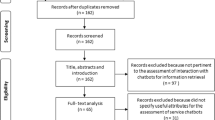Abstract
This paper describes the prototype of a conversational agent embedded within a collaborative virtual environment. This prototype —Ulysse — accepts spoken utterances from a user enabling him or her to navigate within relatively complex virtual worlds. It also accepts and executes commands to manipulate objects in the virtual world. We are beginning to adapt our agent to parse certain written descriptions of simultaneous actions of world entities and to animate these entities according to the given description.
The paper first describes what we can expect from a spoken interface to improve the interaction quality between a user and virtual worlds. Then it describes Ulysse's architecture, which includes a speech recognition device together with a speech synthesiser. Ulysse consists of a chart parser for spoken words, a semantic analyser, a reference resolution system, a geometric reasoner, a dialogue manager, and an animation manager, and has been integrated in the DIVE virtual environment. Ulysse can be ‘personified’ using a set of behavioural rules. A number of tests have demonstrated its usefulness for user navigation. We are currently developing simulations of written reports of car accidents within Ulysse; such simulations provide dynamic recreations of accident scenarios for individual and collaborative reviewing and assessment.
Similar content being viewed by others
References
Andersson M, Carlsson C, Hagsand O, Ståhl O. DIVE, The Distributed Interactive Virtual Environment. Technical Reference, Kista: Swedish Institute of Computer Science. 1994.
Benford S, Greenhalgh C, Lloyd D. Crowded Collaborative Virtual Environments, In Proceedings of CHI'97, Atlanta, Georgia. 1997.
Broll W. Populating the Internet: Supporting Multiple Users and Shared Applications with VRML. In Proceedings of the VRML'97 Symposium, (Feb. 1997, 24–28, Monterey, CA.), ACM SIGGRAPH, ACM, 1997; 87–94.
Pesce M. VRML — Browsing and Building Cyberspace, New Riders Publishing. 1995.
Benford S, Bowers J, Fahlén L, Greenhalgh C, Snowdon D. User Embodiment in Collaborative Virtual Environments. In Proceedings of CHI'95, Denver, Colorado. 1995.
Robertson G, Card S, Mackinlay J. Information visualization using 3D interactive animation. Communications of the ACM. 1993; 36:57–71.
Kosslyn S M. Ghosts in the Minds Machine: Creating and Using Images in the Brain. New York: W. W. Norton. 1983.
Denis M. Imagery and Thinking. In Imagerly and Cognition, Cornoldi C, McDaniel M.A Eds, New York: Springer Verlag. 1991.
Osberg K. Spatial Cognition in the Virtual Environment. HITL Report No. R-97-18. University of Washington. 1997.
Gentner D, Nielson J. The anti-mac interface. Communications of the ACM 1996; 39:70–82.
Bolt RA. Put That There: Voice and Gesture at the Graphic Interface. Computer Graphics 1980; 14:262–270.
Karlgren J, Bretan I, Frost N, Jonsson L. Interaction Models, Reference, and Interactivity in Speech Interfaces to Virtual Environments, In Proceedings of the 2nd Eurographics Workshop. Monte Carlo. Darmstadt: Fraunhofer IGD. 1995.
Ball G, Ling D, Kurlander D, Miller J, Pugh D, Skelly I et al. Life-like Computer Characters: The Persona Project at Microsoft Research, In: Software Agents, J. Bradshaw ed., MIT Press 1997.
Everett S, Wauchope K, Perez MA. A Natural Language Interface for Virtual Reality Systems, Technical Report of Navy Center for Artificial Intelligence, US Naval Research Laboratory, Washington DC. 1995.
Godéreaux C, Diebel K, El-Guedj PO, Revolta F, Nugues P. An Interactive Spoken Dialog Interface to Virtual Worlds. In: Linguistic Concepts and Methods in CSCW, J.H. Connolly, L. Pemberton Eds, Chapter 13: 177–200, London: Springer Verlag. 1996.
Nugues P, Godéreaux C, El-Guedj P-O, Revolta F. A Conversational Agent to Navigate in Virtual Worlds. In: Twente Workshop on Language Technology, TWLT 11, Dialogue Management in Natural Language Systems, S. LuperFoy, A. Nijholt, and G. Veldhuijzen van Zanten Eds. Twente: Universiteit Iwente. 1996.
Allen JF, Schubert LK, Ferguson G, Heeman P, Hee Hwang C, Kato T, et al. The TRAINS Project: A case study in building a conversational planning agent, TRAINS Technical Note 94-3. 1994. Rochester: University of Rochester.
El Guedj PO. Analyse syntaxique par chart combinant règles de dépendance et règles syntagmatiques, PhD Dissertation, Université de Caen. 1996.
Tesnière L. Éléments de syntaxe structurale 2nd ed. Klincksleck 1969.
Ide N, Véronis J. (Eds.) The Text Encoding Initiative: Background and Context. Dordrecht: Kluwer Academic Publishers. 1995.
Mast M, Kummert F, Ehrlich U, Fink GA, Kuhn T, Niemann H, Sagerer G. A speech understanding and dialog system with a homogeneous linguistic knowledge base, IEEE Transactions on Pattern Analysis and Machine Intelligence 1994; 16:179–194.
Huls C, Bos E, Claassen W. Automatic Referent Resolution of Deictic and Anaphoric Expressions, Computational Linguistics 1995; 21:59–79.
Fikes R, Nilsson N J. STRIPS: A new approach to the application of theorem proving to problem solving. Artificial Intelligence 1971; 2:189–208.
Sacerdoti E. Planning in a hierarchy of abstraction spaces. Artificial Intelligence 1974; 7:231–272.
CoTech. Virtual and Augmented Environments for CSCW. Minutes of the COTECH Workgroup. Department of Computer Science, (Nottingham: University of Nottingham). 1995.
Ludwig M, Lenoir A, Nugues P. A Conversational Agent to Navigate into MRI Brain Images, In: Proc. Interfaces 97. 6th International Conference, Montpellier, 28–30 May, 1997; 207–210.
Author information
Authors and Affiliations
Corresponding author
Rights and permissions
About this article
Cite this article
Bersot, O., El Guedj, P.O., Godéreaux, C. et al. A conversational agent to help navigation and collaboration in virtual worlds. Virtual Reality 3, 71–82 (1998). https://doi.org/10.1007/BF01409799
Issue Date:
DOI: https://doi.org/10.1007/BF01409799




